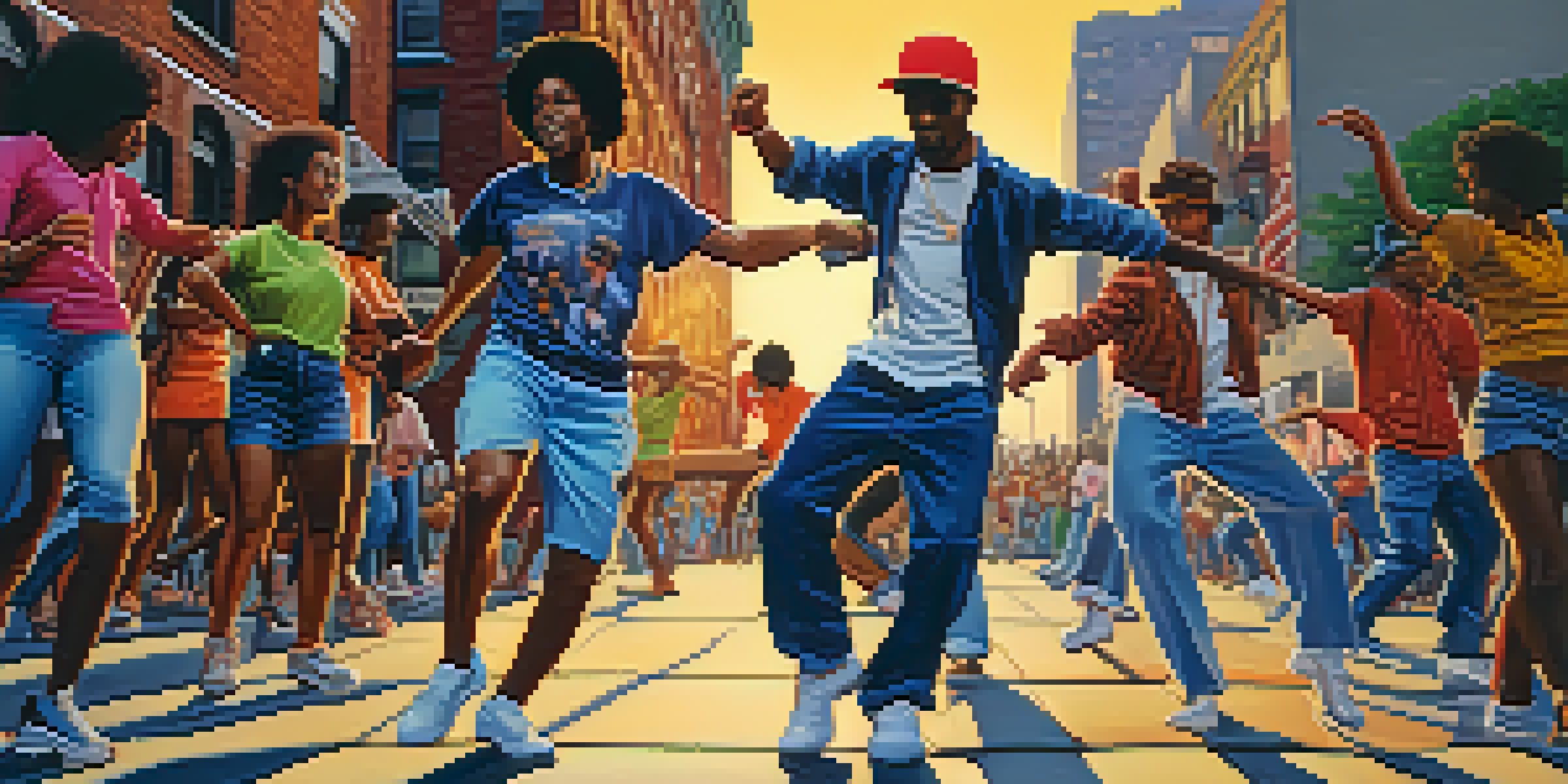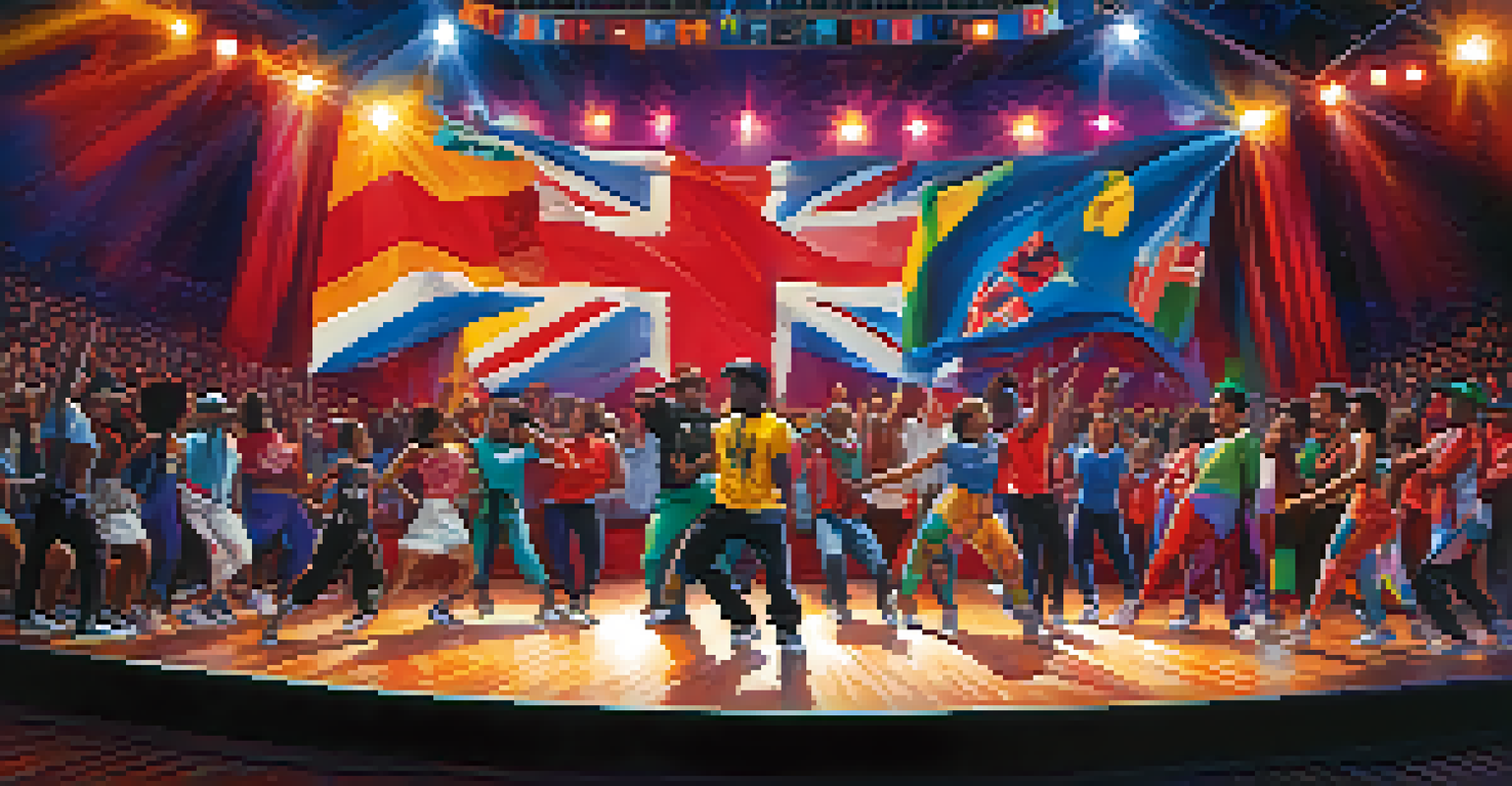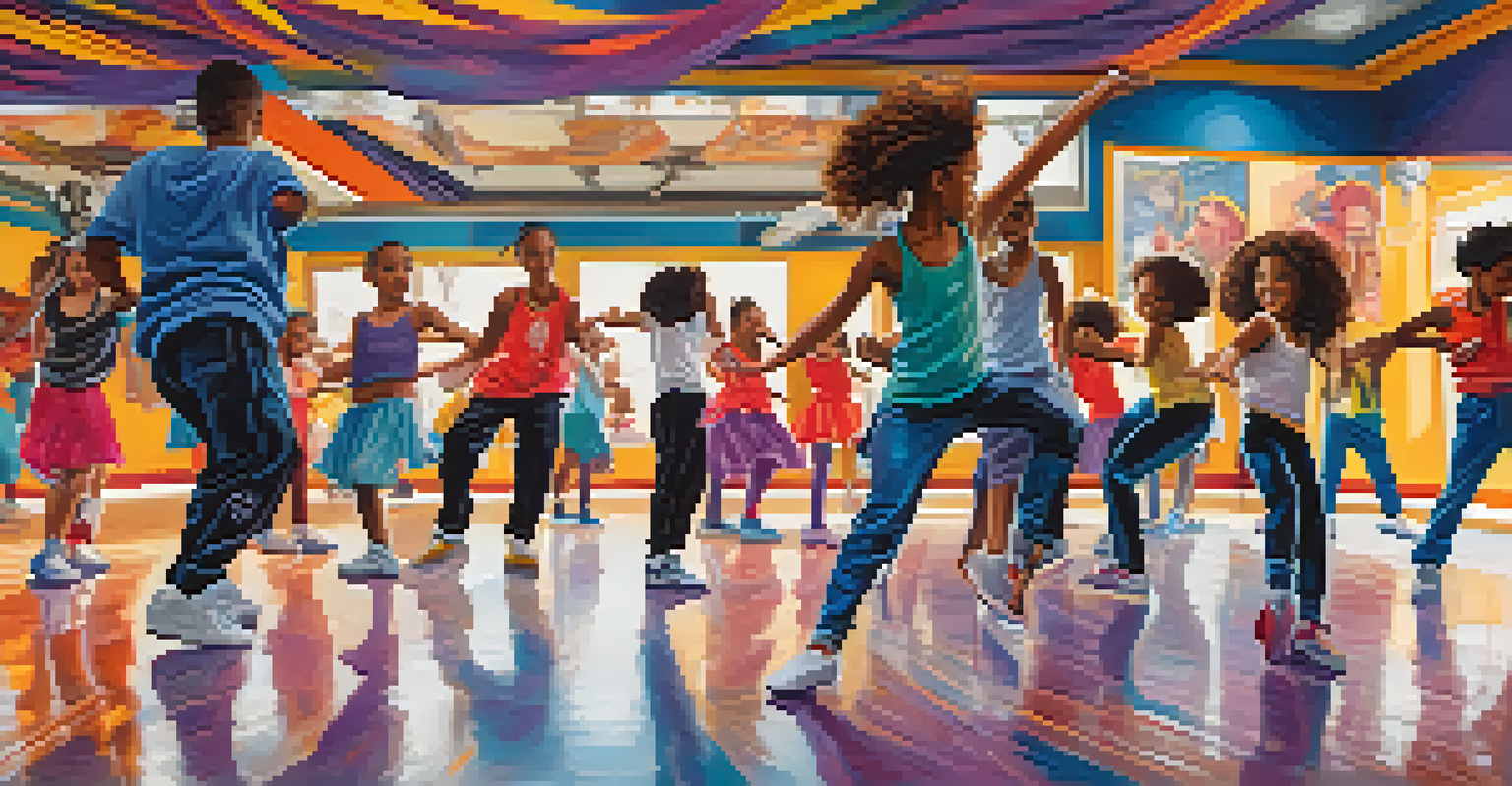Hip Hop and Globalization: A New Era of Dance Expression

Understanding Hip Hop: Roots and Evolution
Hip hop originated in the streets of the Bronx in the 1970s, serving as a creative outlet for marginalized communities. It encompasses not just music but also art, fashion, and, importantly, dance. The evolution of hip hop dance has been influenced by various social and cultural movements, making it a dynamic form of expression.
Hip hop is more than music; it's a culture and a way of life that reflects the experiences of its people.
As hip hop spread beyond the U.S. borders, it began to absorb and blend with local cultures. This fusion has given rise to unique dance styles that maintain the essence of hip hop while reflecting distinct cultural identities. For instance, in Brazil, hip hop dance incorporates elements of samba, creating a vibrant and energetic style.
This cross-cultural exchange has not only enriched hip hop but has also made it a global phenomenon. Each region has contributed its flair, allowing hip hop dance to evolve continuously, inviting new audiences and dancers to join in.
The Role of Technology in Globalizing Hip Hop Dance
Technology plays a pivotal role in the globalization of hip hop dance. Social media platforms like Instagram and TikTok allow dancers to showcase their skills to a global audience, breaking down geographical barriers. This instant connection enables dancers from different backgrounds to interact and learn from one another.

Moreover, online tutorials and dance challenges have emerged, allowing anyone with internet access to participate in the hip hop dance movement. This democratization of dance education means that talented individuals from all corners of the world can share their interpretations and styles, contributing to the global tapestry of hip hop.
Hip Hop Dance as Cultural Expression
Hip hop dance serves as a powerful medium for cultural expression, allowing dancers to share their stories and assert their identities through movement.
As a result, hip hop dance is not only evolving but also diversifying at an unprecedented rate. Dancers can now draw inspiration from various cultures and styles, creating a rich blend that keeps the art form fresh and exciting.
Cultural Identity and Hip Hop Dance
For many dancers, hip hop is more than just a dance style; it’s a form of cultural expression. In countries like South Korea, hip hop has become a way for youth to assert their identity and share their experiences with the world. This cultural significance provides a deeper connection to the dance, transcending mere performance.
Dance is the hidden language of the soul of the body.
The choreography often reflects local issues, struggles, and triumphs, allowing dancers to communicate their stories through movement. This storytelling aspect of hip hop dance fosters a sense of community among practitioners, as they find common ground through shared experiences and expressions.
As hip hop continues to globalize, it also sparks conversations about cultural appropriation and authenticity. Striking a balance between inspiration and respect is crucial for maintaining the integrity of hip hop dance as it evolves within different contexts.
Global Competitions and Their Impact on Hip Hop Dance
Global dance competitions, such as the World Hip Hop Dance Championship, have become platforms for showcasing diverse styles from around the world. These events not only highlight the talent of dancers but also celebrate the rich variety of influences that inform their movements. Competitions foster a sense of camaraderie among participants, uniting them through their shared passion for hip hop.
Moreover, these competitions encourage innovation and creativity, pushing dancers to develop their unique styles while respecting the roots of hip hop. The exposure gained from such platforms can launch international careers and inspire aspiring dancers to pursue their dreams.
Technology Fuels Global Connection
The rise of social media and online platforms has democratized hip hop dance, enabling global interaction and the exchange of diverse styles among dancers.
As dancers compete on a global stage, they also learn to appreciate different cultural backgrounds, adding depth to their craft. This exchange of styles and ideas contributes to the ongoing evolution of hip hop dance, solidifying its place as a universal language of expression.
Influence of Music Genres on Hip Hop Dance
Hip hop dance is intricately linked to the music that fuels it. As new genres like trap, reggaeton, and K-pop emerge, they influence the way dancers express themselves. The beats and rhythms of these styles shape the choreography, leading to innovative movements that reflect current trends.
For instance, the rise of K-pop has introduced a new wave of choreography that blends hip hop with intricate formations and synchronized movements. This hybridization not only attracts attention but also invites a younger audience to engage with hip hop dance in novel ways.
As hip hop continues to evolve alongside music genres, dancers find themselves constantly adapting and redefining their artistry. This fluidity keeps hip hop vibrant and relevant, ensuring that it remains a dynamic form of expression across the globe.
Community and Collaboration in Hip Hop Dance
Community is at the heart of hip hop dance, fostering collaboration and support among dancers. Local dance studios, workshops, and online forums create spaces where aspiring dancers can learn from seasoned professionals and each other. This sense of belonging is vital for nurturing talent and encouraging growth.
Collaboration often leads to the mixing of styles, resulting in unique performances that highlight the diverse influences within the hip hop community. Dancers frequently engage in cyphers, where they showcase their skills and experiment with new movements, creating a supportive environment for creativity.
Collaborative Community Drives Evolution
The hip hop dance community thrives on collaboration and support, fostering innovation and creativity that contribute to the ongoing evolution of the art form.
Through these interactions, dancers build relationships that transcend cultural boundaries, fostering a global community united by their love for hip hop. This collaborative spirit is essential for the ongoing evolution of hip hop dance, reinforcing its status as a shared global art form.
The Future of Hip Hop Dance in a Globalized World
The future of hip hop dance looks promising, as it continues to adapt and evolve in response to globalization. With technology bridging gaps and making dance education accessible, we can expect to see even more diverse styles emerging. This evolution will likely lead to a richer tapestry of dance expressions that celebrate cultural differences while retaining the essence of hip hop.
As the art form grows, conversations about cultural identity and authenticity will remain vital. Dancers will need to navigate these complexities while honoring the roots of hip hop, ensuring that it remains a true reflection of the communities it represents.

Ultimately, hip hop dance is poised to thrive in this new era of globalization, embracing change while staying true to its core values. This balance will ensure that hip hop continues to inspire and unite people across the globe, transcending borders and cultural divides.